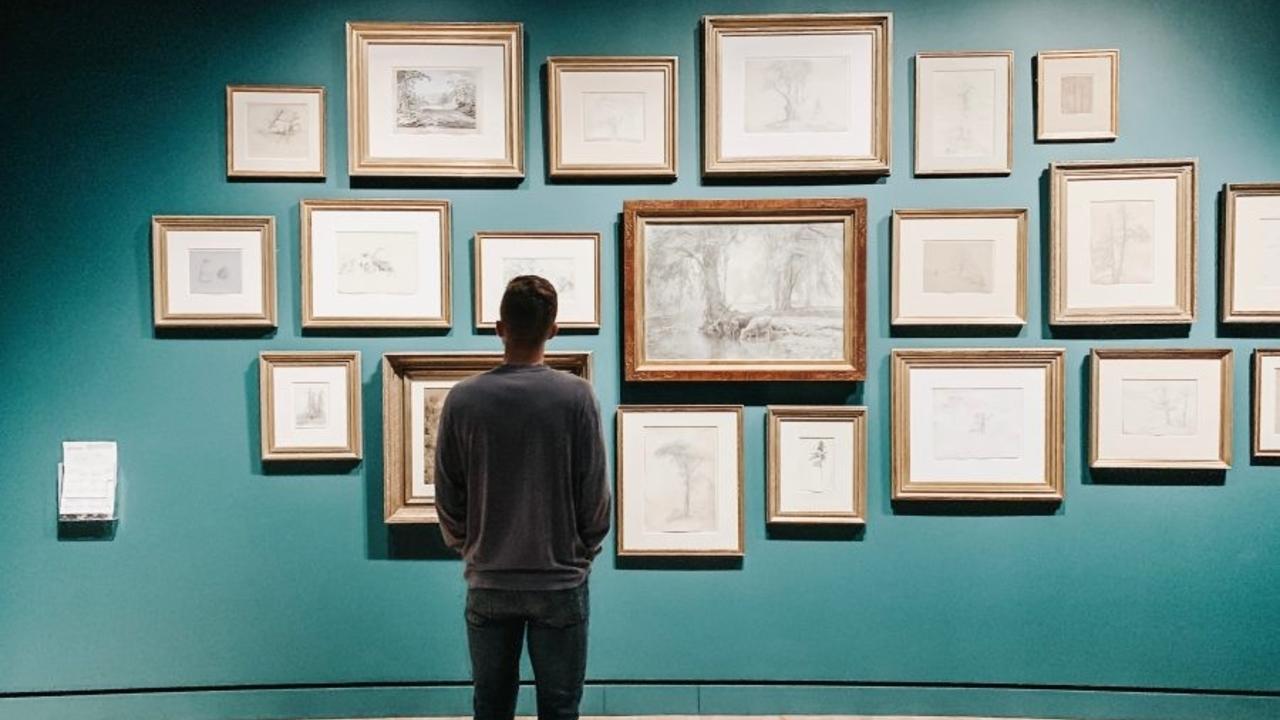Appreciating Your Art in a Gallery Wall Hang
Mar 09, 2020
In Paris in 1667, the French Royal Academy of Painting and Sculpture began its annual exhibition of student work from the Academy. In time, the pressure to fit in all the picture submissions, led to the practice of hanging the works very close together from floor to ceiling. This practice soon became known as the Salon Hang. Even though it was utilised to solve a problem of hanging space, it soon became a key methodology of public galleries and museums for hanging their collections. In the time of Queen Victoria in 19thcentury England, this style of hang moved into the domestic realm. Aristocratic houses used this presentation format to demonstrate their wealth, status and taste – who couldn’t be super impressed by this intensive way of presenting art to the world, or to those whom you want to impress? The Salon, as it became known, often became a point of visual overload for those viewing it, with highly ornate and gilded picture frames housing richly painted images in oil paint, butting up against each other and competing for attention.
During the 20thcentury, this form of wall presentation dropped out of favour with art lovers wanting their works to represent the modernity of their world. Space to view works without interruption or distraction became important as a means of valuing the artwork’s presence within a space. In the 1980s and beyond into the first years of the 21stcentury, white walls and large voids dominated public viewing spaces for wall hung works.
Then… the Salon started to creep back along the wall spaces. It’s recognised now as a Gallery Wall hang. A major resurgence of interest from interior architects, designers and stylists has revived it for domestic spaces. Take a look at Pinterest – the Gallery Wall has been everywhere, in every style presentation for a few years now. Does this make it no more than a design fad?
I think it is more than that and is worth considering for a couple of reasons.
Firstly, there are some public institutions that are doing amazing installations using gallery hangs. I have to give a big shout out to my own city art gallery in Adelaide – The Art Gallery of South Australia – whose Elder Wing install is mind-blowingly fantastic and illuminating. The Elder Wing is a 19thcentury enfilade (a suite of rooms with doorways in line with each other) of spaces where every hang creates an exciting visual narrative. The artworks (both 2D and in some cases 3D mounted to the wall) are interspersed with historical and contemporary objects that tell an Australian story about relationships between visual, social and popular culture. Sometimes the hang goes right up to the ceiling, or spills onto the gallery floor space. There’s one installation that helps us to look at the meaning of the waterfall as a metaphor in artworks. The paintings are predominantly historical from a number of eras; but it’s the way that the curators have hung the paintings in a dramatic diagonal from the ceiling to the floor, so that the viewer gains a real sense of water cascading down and over from a great height, that captures the imagination. We begin to think about both the collective works, and each individual painting, differently. Our sense of all the possibilities of what might be expressed through art is activated by such a daring and visually stimulating gallery hang. So, for this reason alone, this reinvention of the Gallery Wall has my vote!
My second reason for championing the Gallery Wall has to do with you. In our ArtEyeDeer lessons, you see artworks as individual entities, created for a particular purpose. But, even when you view the grid of icons of the lesson artwork images on the website, you start to see connections. What happens, then, if you begin to curate (you select, organise and present works of art) in your own space at home? What if you make a Gallery Wall that expresses something about your preferences as an artist, a curator, and a design stylist? What if you create the Gallery Wall in a way that challenges others viewing it to think about the connections between you and your artmaking?
This does not necessarily have to be a permanent install in your home – it can be as temporary as a day. Most of the works we produce in our video lessons are works on paper; they can be adhered to a wall using blu tack or washi tape. The point of the process is for you to consider how you want to represent your relationship to your art. While you’re thinking, consider too, the incorporation of other memorabilia or imagery that expresses you as a person (think photographs, art cards, keepsakes) – anything visual. Then comes the fun part of curating this wall space in a way that representationally tells your narrative. How close will the works be placed together? Will spaces be left to tell their own story? How far up the wall will you go? (Are you good on ladders??) Should some objects be added? Can they spill onto the floor, or be arranged onto another horizontal surface like a side table or bench? Do you have variation in scale and shape? What part will colour play in telling your story? Try arranging your wall composition on the floor first, to allow you scope to rearrange. When you’re happy with the arrangement, take a photo of it so that you can keep referring to it as you install it on the wall.
Now that you’ve gone this far, get brave and invite others to view your Gallery Wall installation. It’s such a great way to start a conversation about art and social and visual culture; and it’s an even better way to make your mark as an emerging artist, or curator, or design stylist, or all three!
Wendy Muir
Art Eye Deer Teacher

